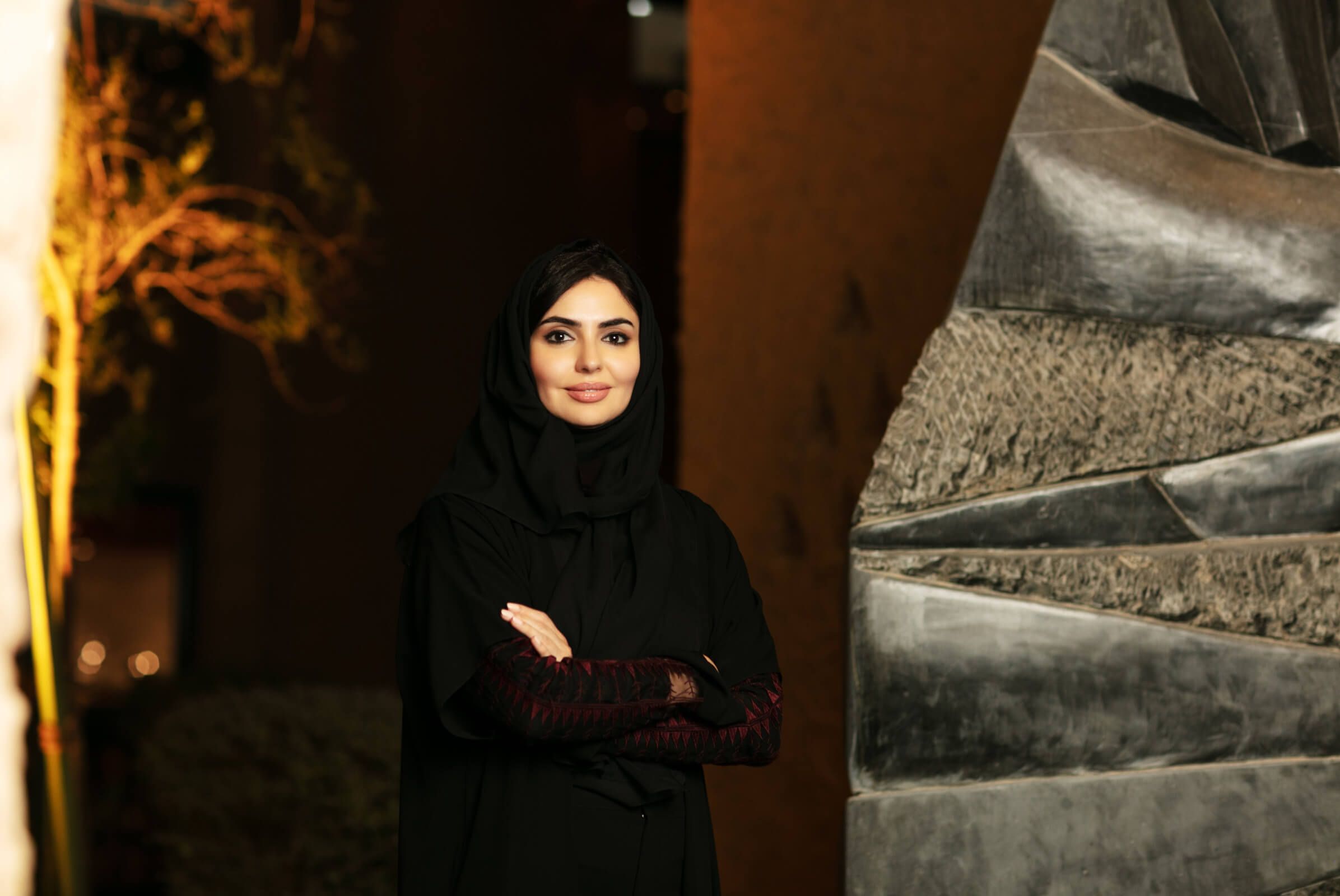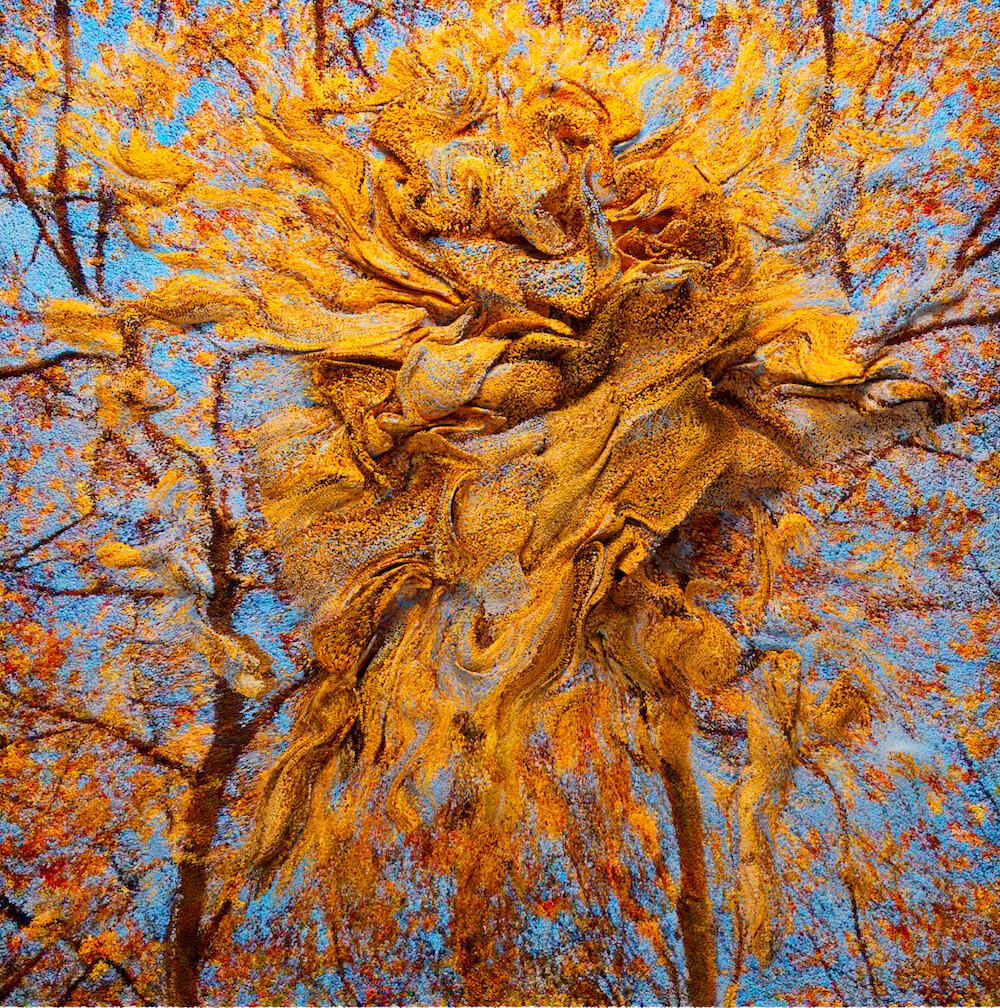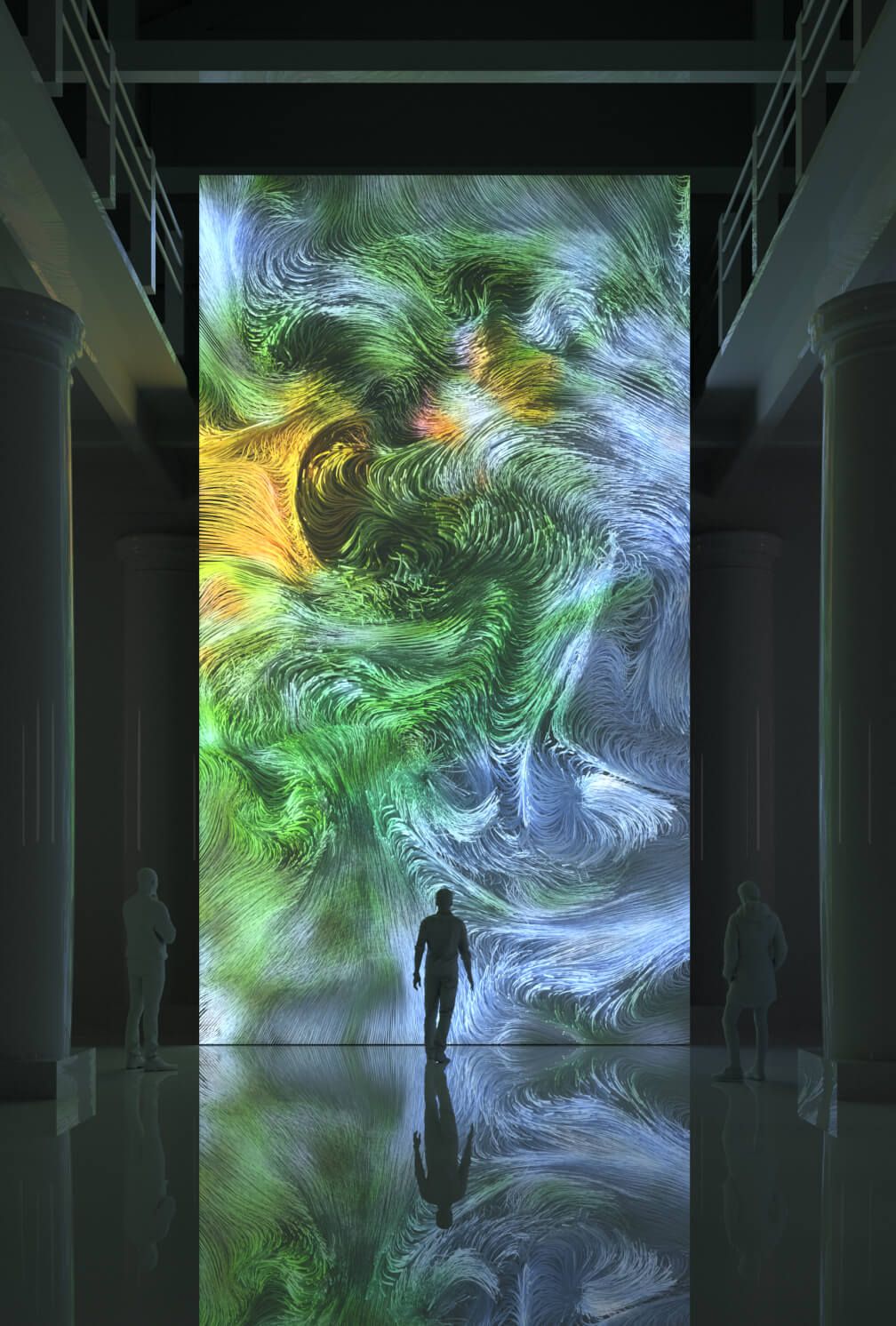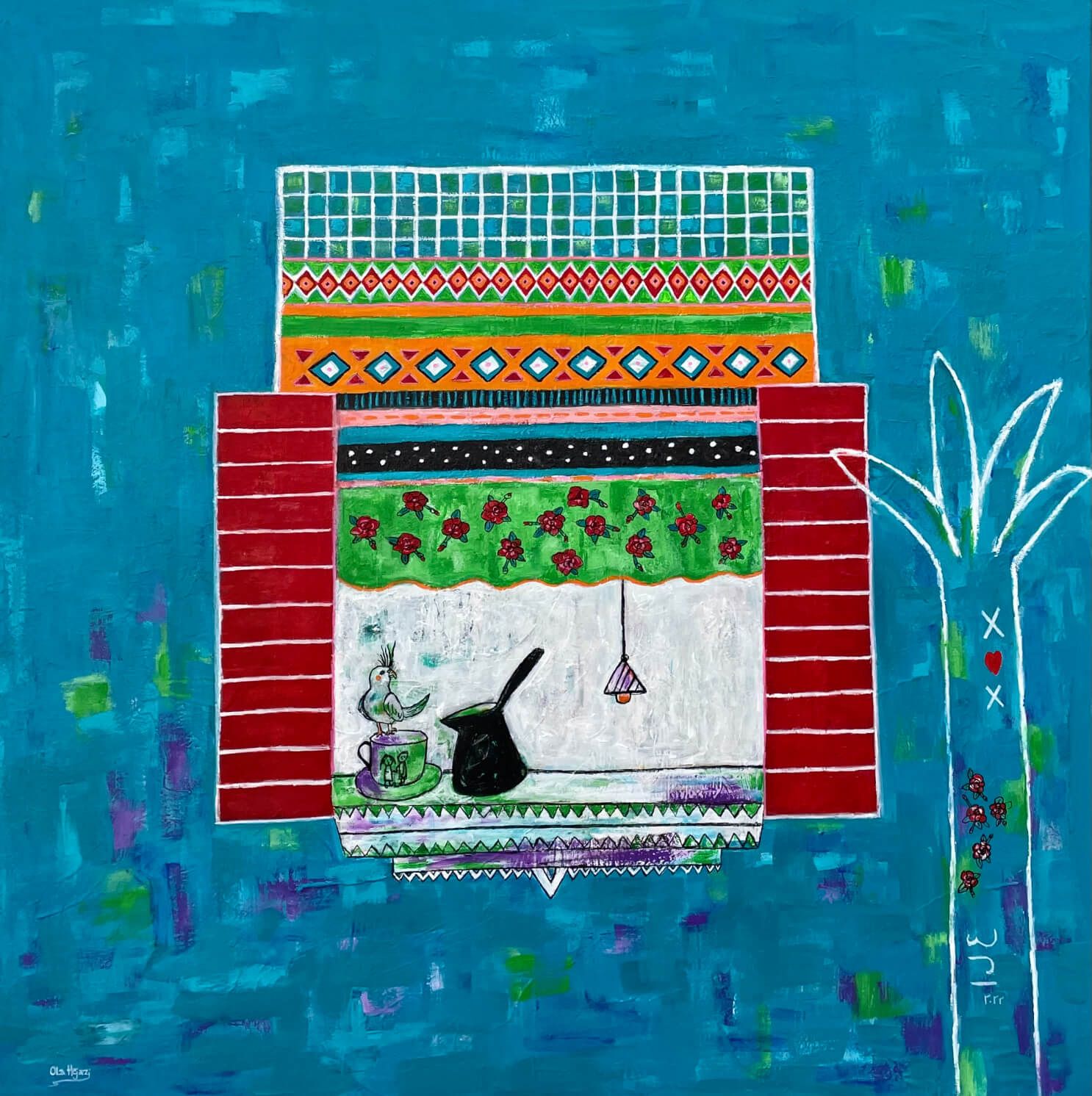The Culture of Art
Rashed Alshashai’s installation, Takween (2021). commissioned by The Diriyah Gate Development Authority for the inaugural Diriyah Biennale.
There is no limit to the art of art. And when we dig into the origin of the term, ‘art’, it originally meant skill or craft, and then evolved to include an aptitude for scholarship and learning. It is important from time to time to reflect on the things we take for granted, like art and the creativity and timelessness that comes with it.
Here, in an exclusive interview with Ithraeyat, we meet Dalya Mousa, the Director of Arts at Diriyah Gate Development Authority, and she shares with us the importance of art, the evolution of Saudi art, and art’s power of healing and what a great time it is to be an artist in the kingdom.
One of the inspiring elements of Ms. Mousa’s role is Diriyah, a historic place of many stories, and known as ‘The Jewel of the Kingdom.’ In 1446, Diriyah was established on the Hanifa Valley banks and became the capital of the First Saudi State in 1727. Diriyah’s At-Turaif UNESCO World Heritage Site (since 2010) is a symbol of this country’s rich history and a true sanctuary for national heritage and treasures preserved in open-air museums. Salwa Palace is the largest standing structure in the citadel and is the home of kings and heroes.

Dalya Mousa, the Director of Arts at Diriyah Gate.
Q1. Why is art important in our lives?
Art is an essential aspect of culture, which plays a vital role in our lives. Art is significant in so many different, interconnected ways. It is a means of communication, of sharing a message, of sharing our view of the world, and our view of the past, present, and future. It is a source of community,
bringing people together in a common experience and tapping into the souls of both artists and audiences through methodologies. It is a form of progress: some of the greatest human achievements have been artistic. And let’s not overlook beauty and amusement which in themselves are also valid and important responses to creativity.

Maha Malluh’s Food for Thought, Abraj (2016). the first commission by a contemporary Saudi female artist in the public realm in Saudi Arabia.
Q2. Tell us about an art piece or two that have been particularly significant in your career?”
I feel immensely proud every day on my journey to and from the office when I pass by Rashed Alshashai’s installation, Takween (2021). The work was commissioned by Diriyah Gate Development Authority for the inaugural Diriyah Biennale and is a beautiful representation of what we aspire to achieve at Diriyah Gate: it honors our cultural heritage while also transforming it into a source of inspiration for the future. The public artwork includes four gates that represent the four Imams that established the first Saudi state. In the morning, the sunlight hits the palm weave, and in the evening, the psychedelic colors of the lightbox come to life. The work fills me with energy.
Another really significant artwork in my career is Maha Malluh’s Food for Thought, Abraj (2016), the first commission by a contemporary Saudi female artist in the public realm in Saudi Arabia. The work comprises a collection of aluminum pots, telling the story of cultural identity and heritage, celebrating Saudi history, traditions of hospitality and personal testimonies. I find it very poignant. And as a Saudi female, and a leader in the arts and culture sector, I’m always proud to work closely with such respected female artists. It was a privilege to contribute to the realization of this important work in my previous role at Art Jameel.
Q3. Why did you enter the field of art? And tell us a bit about your role.
I am lucky that a career in the creative industries was a clear path for me from a young age. My background is in fine art and graphic design, so my own creativity has always been central to who I am. I then completed a Master’s in the Business of Art and Design, covering areas such as creative entrepreneurship and arts management. It’s such a privilege to spend my working life now supporting the career paths of other individuals in the Kingdom’s creative communities.
In my role as Arts Director at Diriyah Gate, I’m responsible for developing a range of arts and cultural initiatives and events across the masterplan, incorporating both traditional and innovative media. I love that part of my role is to network with individual artists and creatives, as well as developing other strategic partnerships with national and international institutions.
What inspires me the most about my job is that Diriyah is the birthplace of the Kingdom, and the first capital of the first Saudi state. It’s the land of our kings and heroes. So, truly it’s an honor to be at the forefront of Diriyah’s arts and culture offer.
Q4. What are some of the misconceptions about Saudi art?
In the last decade or so of my career I have worked a lot with international partners, so I have seen firsthand some of the misconceptions that people around the world may have about Saudi art. I think in general the misconceptions fall into two categories: that Saudi art is only traditional art, based in the past, based in heritage and in traditional media; or, that the art scene in the Kingdom is reliant on imported ideas or individuals. Actually, we have a thriving and long-standing art scene of local artists and arts professionals who are now at the vanguard of defining and redefining the Kingdom’s creative industries, and I am always amazed by how groundbreaking, innovative and thought-provoking their work is.
Q5. Tell us about the healing power of art?
I think the effect of art on our emotions is well documented. Just look at Stendhal syndrome!* I was interested recently to hear that the World Health Organization is calling for a “healing arts revolution”. Their program is based on evidence that shows embedding arts into systems and places of healing can improve health outcomes and support recovery from illness and injury.
Q6. What is your advice to new artists?
I would advise anybody interested in the field that the key to success is determination, consistency, and the mastery of knowledge. It’s such an important pillar of Vision 2030 to encourage and empower creativity in the Kingdom, so there’s a fantastic range of initiatives and opportunities available for those wishing to learn, experience and develop their practice. I have to say I think emerging artists in Saudi Arabia are the envy of the world right now, given the extent of support available from the public and private sector - from learning programs and capacity-building programs, to scholarships and residencies. My advice would be to really take advantage of this amazing era in our country and the opportunities on offer from the Ministry of Culture in particular. Now is the time.

Rashed Alshashai’s installation, Takween (2021). commissioned by The Diriyah Gate Development Authority for the inaugural Diriyah Biennale.
Q7. How has Saudi art evolved? Where do you see the future of art in Saudi Arabia going?
Historically, the cultural ecosystem of the Kingdom was largely grassroots-led. That has evolved, with the clear mandate from Vision 2030 and the leadership and funding behind it creating significant momentum within the cultural sector of the Kingdom. Ranging from new local and national festivals to residencies, studio and exhibition spaces as well as training programs, these new possibilities have been welcomed by creative practitioners. It’s just an incredibly exciting time for arts and culture in our Kingdom.
I think there is a societal shift underway in Saudi Arabia in the way that cultural careers are perceived, encouraging a new wave of young people into the wider cultural scene. And one of the most interesting trends I have observed is the way emerging young artists are increasingly looking to our history and heritage for their new ideas.
We’re seeing an entirely fresh approach and a revival of our traditions simultaneously.
We thank Ms Mousa for her time, and for giving us a rare insight into Saudi art and how it continues to inspire us, as it heals, awes and connects us all with beautiful multi-form stories.
*[Stendhal Syndrome (attributed to the 19th century French author) is a psychosomatic condition involving rapid heartbeat, fainting and even hallucinations, allegedly occurring when individuals become exposed to objects, artworks, or phenomena of great beauty and antiquity]
[More information on the WHO program here]


